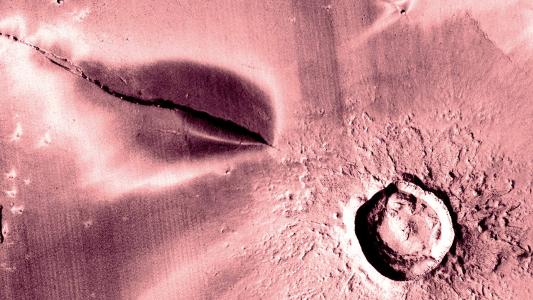Radioactive plutonium from space found in Pacific Ocean
For the first time, scientists have discovered a rare form of plutonium on Earth. The radioactive element was lurking at the bottom of the Pacific Ocean — and an exploding star appears to have helped it get there.
Why it matters: The discovery of this plutonium (plutonium-244) could help scientists understand how very heavy elements form, filling a gap in our understanding of the universe.
“These are the elements where we are still in a mystery,” lead researcher Anton Wallner told NPR. “We do not know exactly where they are produced and how much is produced in different sites.”
Started from the bottom: The plutonium was found alongside iron-60, a radioactive form of iron, in samples of seabed rock donated by a Japanese oil exploration company.
Any plutonium-244 and iron-60 that was on the Earth when it formed would have decayed by now, so the researchers knew these samples must have originated from space, and based on the age of the rock, they would have reached Earth within the past 10 million years.
Origin story: Ordinary iron and other heavy elements form when massive stars die and explode as supernovae. For plutonium and other heavier elements to form, though, astronomers believed that something even more cataclysmic had to happen, such as the merging of two neutron stars.
Because the elements were found in the same layers of rock, it appears they had a common origin, but based on their ratios within the rock, a supernova couldn’t have been solely responsible for the creation of the plutonium.
“Our data actually suggests that it might be that both scenarios are necessary,” Wallner said. “It’s both. It’s supernovae explosions that produce a part of these heavy elements but also neutron star mergers or any other rare events.”
The plutonium could fill a gap in our understanding of the universe.
The cold water: There is the possibility that the plutonium did form during a neutron star merger, but was then sent to Earth along with iron on the back of a supernova explosion.
The researchers are now studying a larger sample of the seabed rock in the hopes of finding new clues as to the origin of the plutonium in it.
“What is fascinating is that you find some six or 10 atoms, which you can identify in the end as not from Earth but from space, and then you get some hints about where it had been produced and when it had been produced,” Wallner told Live Science.
We’d love to hear from you! If you have a comment about this article or if you have a tip for a future Freethink story, please email us at tips@freethink.com.
